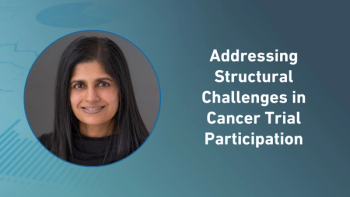
EU Perspectives: Guidance for Using Patient Experience Data in Real-World Studies
Patient insights are expected to become increasingly instrumental in optimizing medicine development and regulatory decision-making.
Gathering patient insights and understanding the perspectives of living with and treating specific medical treatments and medical conditions provides invaluable insights to the EMA and EU regulatory network, and to technology and pharma companies.
Questions remain however, as to what data should be collected, how it should be collected, analyzed, and ultimately used to support medicines development. As such, patient insights are not systematically captured and used in medication development and regulatory decision making.
A workshop held by EMA in late 2022 gathered input from patients, consumers, healthcare professionals, academia, regulators, HTA bodies and industry. The goal was to define and address some key challenges associated with these patient insights, to support medicine development and regulatory decision-making.
The concept of patient experience data, as defined in the EU1 broadly covers five distinct areas:
- Patient Experience Data is data collected from a variety of patient engagement activities and methodologies to collect patient experience of their health status, symptoms, disease course, treatment preferences, QOL and impact of health.
- Patient Experience Evidence is scientifically validated evidence captured.
- Patient Engagement refers to all activities involving interaction with patients to gather their experience on disease, preferences, outcomes, and treatments.
- Patient Preferences is how desirable or acceptable a patient is to a given alternative or choice of outcomes of a given medicine.
- Patient Reported Outcomes (ePROs) refers to health or treatment outcomes reported directly by the patient without interpretation of a third person (clinician or other).
Defining methodologies with patient input
Protocol creation outlines the methodologies which are fit for purpose and produce reliable, scientifically validated data to capture research. There is increased interest in capturing digital real-world patient insights. Researchers want to determine appropriate patient-focused Patient Reported Outcome methodologies to support relevant information required for Product Information and the Summary of Product Characteristics (SmPC).
By combining ePRO data with other real-world patient experience data such as wearables and EHRs, a full and holistic picture of the patient’s health and lifestyle is created. This not only supports the medicine development and regulatory decision-making, but it also gives a true indication in to the patient’s wellbeing.
To successfully define new methodologies that measure the effects of medicine, it is important to establish a core team of multi stakeholders early in the study design which includes the voice of the patient alongside scientific and technology experts. This approach also can help to collect supplemental patient experience data and ensure expected outcomes are aligned to the protocol requirements.
Digitization of data capture
Digital transformation of data capture offers huge benefits to the collection and analysis of patient experience and real-world data. Consumer-grade applications and interfaces with incorporated patient reminders, educational content, real-time monitoring, and remote patient data capture, have made a significant difference in how life science companies can interact with patient populations.
Compliance to data security and data control requirements such as GDPR, HIPAA and safe harbor are pivotal requirements across the EU and the wider global community as trials strive to meet the demands of different local country regulatory requirements.
There are a number of collaborative initiatives underway which seek to optimize data linkage across countries and geographic regions in a standardized manner. One project led by the EHDS (European Health Data Space)2 in tandem with TEHDAS (Towards European Health Data Space)3 is leading a cross-country initiative designed to advance: “the cross-border secondary use of health data in Europe to improve public health.”
TEHDAS recognizes that data captured across different countries can be hard to access and analyze, due to the different local country rules. The plans set out by TEHDAS and EHDS address these challenges by introducing standardized rules across different EU member countries. This makes it easy for physicians to access primary health data such as e-prescriptions, as well as providing specific licenses to be used by researchers for developing more effective treatments and to reduce side effects of medicines (secondary data).
Regulatory acceptance of patient experience data
One reason often outlined as to why patient experience data is not actively included in medicines development is because of a belief that the data will not be accepted by regulators, or is not considered of value in their decision making.
There is a recognized need for further guidance from regulators on what criteria and minimum patient experience data is required for regulatory decision-making, and ultimately to ensure medicines are fit-for-purpose. EU regulators have said that they actively welcome patient insights, namely COAs (PerfOs, ClinROs, and ObsROs) as part of medicines development, and agree that this type of information should be part of marketing authorization applications. In support of this movement, FDA published a report in June 2021 which revealed that of the 176 approved new medicines (NDAs and BLAs) granted between June 2017 and June 2020, 30% mentioned patient experience data in the labelling, with COAs accounting for 92% of that data
In conclusion, capturing Patient Experience Data is becoming increasingly important to support medicines development and regulatory decision making.
A number of regulatory led initiatives are underway that strive to support this interest.The existing framework developed by EMA for establishing the qualification of new methodologies, regulatory/HTA parallel scientific advice and initiatives likes TEHDAS can pave the way to ensuring future international adoption with international regulatory decision makers. As I have outlined, there are a range of practical steps which companies across the industry can adopt in order to support the inclusion of PED for medicines approvals.
Julia Lakeland, chief product officer, uMotif
References
Newsletter
Stay current in clinical research with Applied Clinical Trials, providing expert insights, regulatory updates, and practical strategies for successful clinical trial design and execution.




